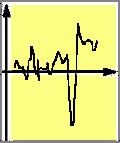
Russian Academy of Sciences, Siberian Division



Investigation of ionospheric response to total solar eclipses of March 9, 1999; August 11, 1999; June 21, 2001
Experimental observations of the ionosphere at the time of solar eclipses provide a source of information about the character of behavior of the various ionospheric parameters. Regular ionospheric effects of solar eclipses are fairly well understood. They imply an increase of effective reflection heights, a reduction in concentration in the F-layer maximum, and a decrease in total electron content (TEC) in the ionosphere, which is typical of the transition to the nightside ionosphere (Cohen, 1984). The behavior of the above parameters can be modeled using appropriate ionospheric models (Stubbe, 1970; Boitman et al., 1999).
The main parameters of the ionospheric response include the value of the delay τ with respect to the eclipse totality phase, as well as its amplitude A and duration ΔT. Almost all publications devoted to the study of the ionospheric response to solar eclipses make estimates of these parameters.
The measurements of τ were made by analyzing the characteristics of the ionosphere-reflected radio signal at vertical-incidence soundings at a network of ionospheric stations (Marriott et al., 1972; Goncharov et al., 1982; Boitman et al., 1999) by measuring the frequency Doppler shift at vertical- and oblique-incidence soundings (Boitman et al., 1999). In the cited references, the value of τ was found to vary from 0 (Marriott et al., 1972) to 20 min, with the amplitude A of a decrease in local electron density of order 9*104 cm-3, and the response duration of about 1 hour (Boitman et al., 1999).
Similar measurements at an ionospheric station were made during the solar eclipse of September 23, 1987 in the south-eastern Asia (Kang Cheng et al., 1992). The amplitude, delay and duration of the ionospheric response were found to be 0.3*106 cm-3, 18 min and 1 hour 30 min, respectively. At the same time, measurements during the eclipse of October 24, 1995 in the same region provided an estimate of τ of about 80 min (Huang et al., 1999), ΔT = 1 hour 20 min, and A in excess of 1*106 cm-3. The measurements of f0F2 over the Scaramanga station during a partial solar eclipse of May 20, 1996 (Anastassiadis and Matsoukas, 1970) give the value of τ of about 38 min.
Interesting results were obtained in observations of an annular solar eclipse of May 30, 1984 at the Millstone Hill incoherent scatter radar (Salah et al., 1986). A decrease in electron density with respect to the eclipse totality phase occurred in this case 20-30 min later, with A = 4*106 cm-3, and ΔT = 2 hours 15 min. However, facilities of this kind are too few to be extensively used in experiments during solar eclipses.
A large amount of data was obtained by measuring the Faraday rotation of the plane of polarization of VHF signals of geostationary satellites (Klobuchar and Malik, 1970; Davies, 1980). These measurements revealed the eclipse-induced effect of a deep depression (decrease) in TEC with the amplitude A varying from 2 to 14 TECU, and with a typical time of TEC depression and recovery of about several hours (the unit of measurement of TEC that is adopted in the literature corresponds to 1016 m-2). The spread in the values of τ was also found to vary over a wide range, from 5 to 40 min.
Hence a large body of experimental data do not permit us to make any reliable estimates of the basic parameters of the ionospheric response. One of the reason for such a great difference is attributable to the use of different methods of measurements which differ greatly by spatial and temporal resolution. However, the main reason is caused by dissimilar characteristics of the eclipse itself, by geophysical conditions of individual measurements, and by a large difference of the latitude, longitude and local time when experiments are conducted.